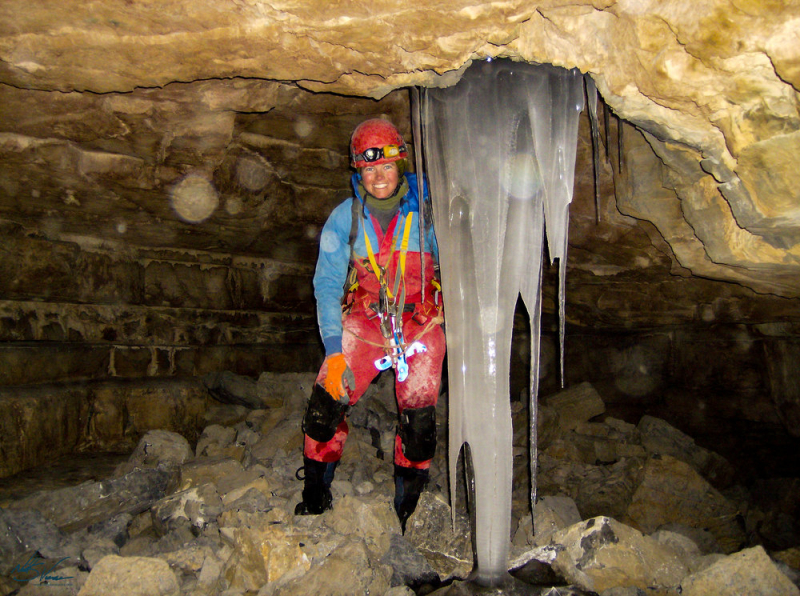Castleguard Cave

The second name among the the largest caves in Canada is Castleguard Cave. It is a limestone cave in the Rocky Mountains of Alberta, Canada, at the north end of Banff National Park. It is Canada's longest cave, with 20,357 meters (66,788 feet) of measured passages (as of 2007), and its fifth deepest, at 384 meters (1,260 ft). Castleguard Cave begins with a gentle ascent and ends beneath the Columbia Icefield.
Castleguard Cave is little in comparison to other renowned caves across the world, but it is well-known among cavers and speleologists all around the world. It's the subject of a movie and a coffee-table book, and it's cited in almost every printed cave reference book.
This is owing, in part, to its breathtaking, secluded alpine setting. Because it is located within a protected area within a national park, motorized ground access is prohibited, and the risk of flooding at the entrance has constrained most explorations to the middle or late winter, cavers must enter it via a 20-kilometer (12-mile) ski with towed sleds or by helicopter. The cave's straight structure and one entrance only add to the sense of isolation. The classic excursion, which takes the shortest path from the entrance to the Ice Plug, covers 9 kilometers (6 miles) of the cave tunnel. Cavers frequently spend four or five days underground, alternating between two underground camps.
The cave formations in most northern caves are sparse, but Castleguard Cave contains several parts with good flowstone and stalactites, as well as a nest of extremely rare cubic cave pearls and large displays of flagged soda straws. Castleguard Cave's back tunnels are the only ones in the world to finish in glacial ice plugs forced into the cave from the sole of a surface icefield.
During glacial eras, the cave may have served as a haven for the isopods and other creatures present in its waters. The amphipod Stygobromus Canadensis, a one-of-a-kind species, was discovered in 1977.
Location: Banff National Park.
Depth: 384m
Length: 20,357m






